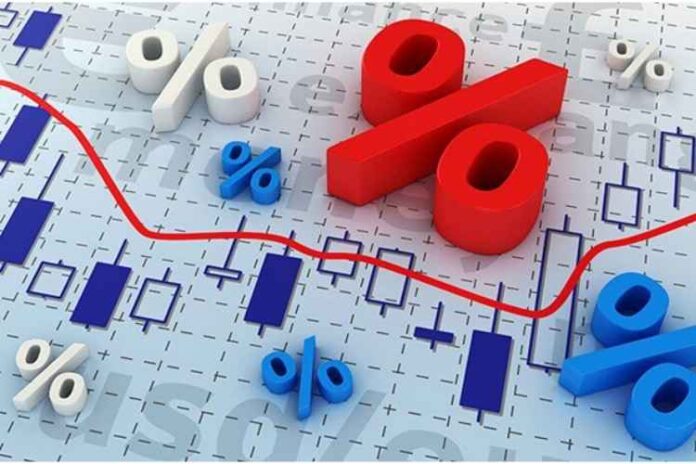What Are the Negative Effects of Low-Interest Rates on the Economy? Low-interest rates have become an integral part of the global economy in recent years, but they can have consequences that are both positive and negative for different areas of the market. The biggest issue with low-interest rates is that they tend to encourage riskier investments, which can lead to major financial losses when times get tough. Here’s what you need to know about the negative effects of low-interest rates on the economy so you can make better investing decisions going forward. You can also get more information on https://tradingeconomics.com/.
What Is Low-Interest Rate?
If a country’s interest rates are low, it means that borrowing money and taking out a loan is cheap. These days, when rates are low, people will tend to take out larger loans because they don’t have to pay as much in interest charges. This can cause problems for borrowers and creditors alike if too many loans are taken out by people who aren’t financially stable enough to handle them.
Effect of Low-Interest Rates on the Economy
The biggest concern surrounding low interest rates is whether they are helping or hurting economies. There are two ways to look at it, a country can be considered in terms of its nominal growth or real growth. Nominal growth measures a country’s economic health based solely off its gross domestic product (GDP) — which has nothing to do with inflation, and everything to do with market value. Real GDP, on the other hand, is calculated based off a country’s gross domestic product after being adjusted for inflation.
Questionable Saving Culture
When interest rates are low, people don’t save as much. Saving is a good thing in itself, but what happens when you have lower rates and higher income inequality? There are more people with a great need to save—for retirement or for that next big purchase—but fewer places for them to put their money. For banks, low interest rates make loans seem less profitable than before: They don’t want to offer consumers high-risk or high-yield loans.
Possibility of Uncontrollable Inflation
Lowering interest rates to stimulate economic growth is one of many steps taken by an economy that faces a recession. The belief is that lower interest rates encourage people to take out more loans, which in turn stimulates spending and creates new jobs. While generally effective, low-interest rate policies can lead to other problems. One possibility is uncontrolled inflation, which happens when demand for goods outstrips supply.
Exchange Rate Depreciation
If a country’s interest rates are too low relative to its trading partners, it will cause exchange rate depreciation. The lower interest rates will make investments within that country comparatively more attractive. Investors have an incentive to seek higher returns by shifting their capital into a high interest rate currency or asset class.
Difficulties in Exportation
The price of a good or service is made up of two components: supply and demand. If there is not enough demand for a product, then prices can fall to attract buyers. Lower prices means that products are sold more cheaply in foreign markets, making it possible for exporters to sell their products at a lower price than domestic competitors, gaining them an advantage in those overseas markets.
Increased Cost of Importation
In order to purchase and import products, a nation must have money. If interest rates are low, countries have less incentive to invest in things like bank accounts or bonds (these investments earn little in interest). These countries must then turn elsewhere to borrow money, and they often do so by borrowing from other countries. This can make products more expensive for nations that depend heavily on imports—in some cases, importers must pay many times what they would have previously paid for a product due to increases in currency exchange rates.
Refinance Loans – The Brighter Side for So Many People
Refinancing a mortgage loan means you can take out money from a new lender and put it toward your current home, thus saving hundreds or thousands of dollars. Refinancing is also often used to lower monthly payments, lower interest rates and make your loan term shorter. With today’s economy, many homeowners are turning to refinancing in order to keep their homes.These are loans with lave renter designed to make debt repayment easier for people
Conclusion
What you should consider is that rates are low now. The low rates could be a sign of things to come, and if you’re planning on investing in real estate or building a new business, you may want to avoid doing so for now because it might become more expensive once interest rates rise again. However, low interest rates are great for consumers because it makes borrowing cheaper, which can lead to more spending at businesses across all industries.
The high money supply and low interest rate are both linked to inflation and the risks of a deflationary spiral. Low interest rates encourage the lending of money and add to the money supply. After the 2008 credit crisis, the Fed lowered interest rates and injected new money into the economy to stimulate growth. However, the increased money supply creates inflation, as too much money chases a finite supply of goods and services. This increases prices and raises the risk of economic recovery.
The low interest rate also negatively impacts the middle class. The middle class depends on earned income and savings and investments. When interest rates are low, companies lay off expensive workers and hire cheaper contractors. This reduces wages, putting people in a position where they cannot afford to pay their bills. Furthermore, when wages fall, prices of goods and services decrease. This results in a lack of consumer spending, as savings yield a lower interest rate.








